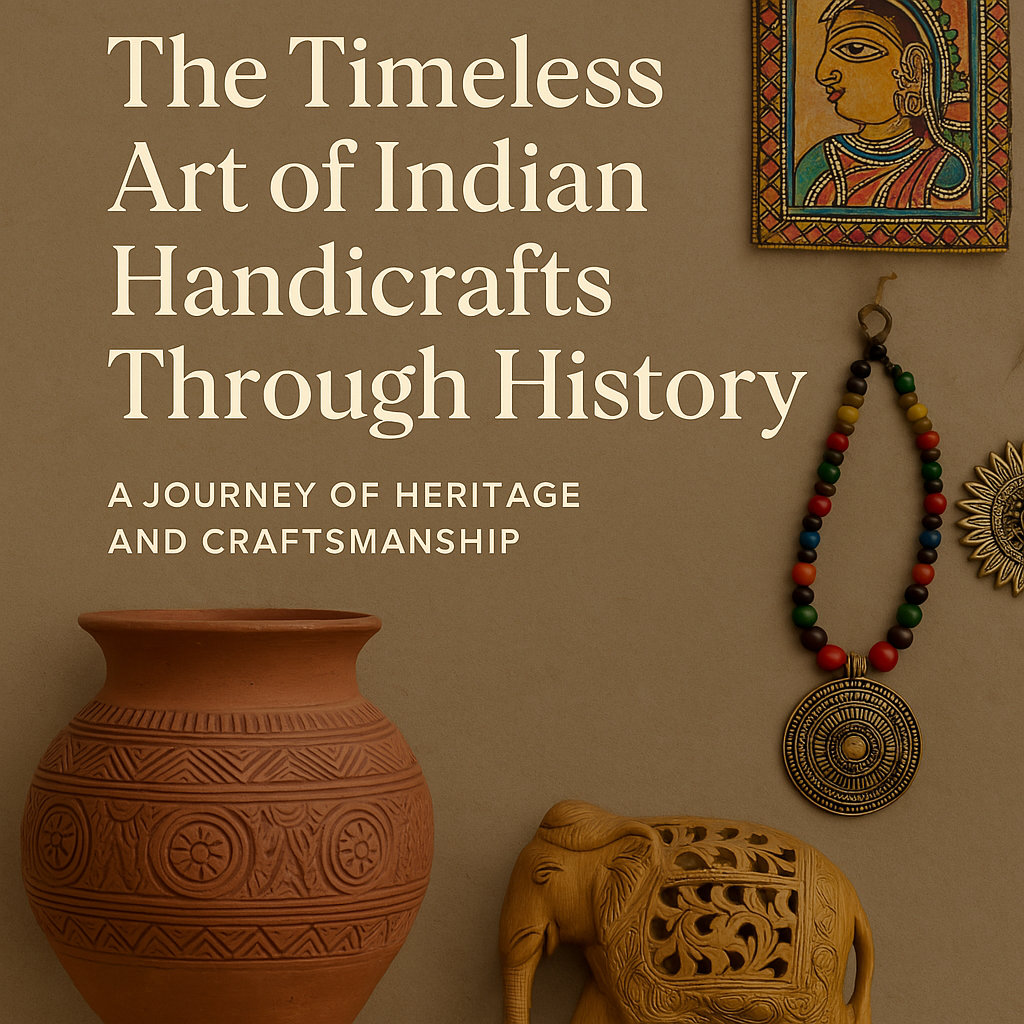
A Journey Through History:
Indian handicrafts art is a living expression of India’s cultural identity and creativity. It reflects centuries of tradition, storytelling, and skilled craftsmanship passed down through generations. From terracotta figurines of the Indus Valley to the intricate Bidriware of Karnataka, each piece tells a tale of artistry rooted in history and purpose.
In this article, we take you on a journey through time to explore how Indian handicrafts have evolved, survived, and continue to thrive in the modern world.
🏺 Origins in the Indus Valley Civilization
The roots of Indian handicrafts art can be traced back to the Indus Valley Civilization (3300–1300 BCE). Excavations from Harappa and Mohenjo-daro reveal artifacts like terracotta figurines, pottery, beads, and seals, all created with precision and aesthetic sensibility.
These early craftspeople used locally available materials—clay, stone, and metal—and created objects for both everyday use and ritualistic purposes. Their work laid the foundation for India’s strong craft traditions.
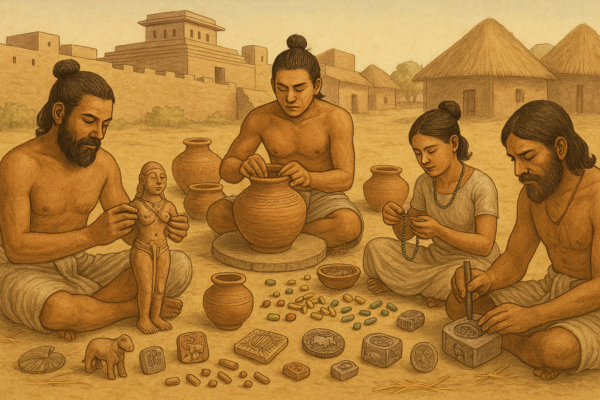
🕌 Flourishing During the Maurya and Gupta Periods
Between 300 BCE and 500 CE, Indian handicrafts saw significant growth under the Maurya and Gupta Empires. This era was marked by advancements in stone carving, metalwork, and textile weaving. The famous Ajanta and Ellora cave paintings, for example, illustrate not just artistic skill but also the clothing, jewellery, and lifestyle of that era—much of which inspired contemporary crafts.
Trade with the Roman Empire and Southeast Asia led to a growing global demand for Indian goods like silks, muslins, and ivory work.
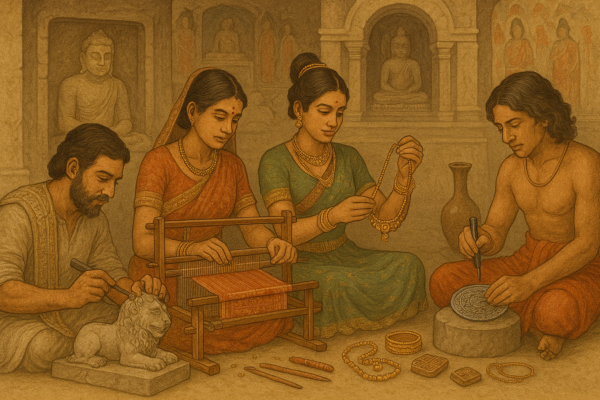
🕌 The Mughal Influence: Elegance and Extravagance
The Mughal period (16th–18th century) brought a wave of refinement to Indian handicrafts. Under emperors like Akbar and Shah Jahan, Indian art blended Persian, Turkish, and local styles to create masterpieces in:
- Miniature paintings
- Inlaid marble work (as seen in the Taj Mahal)
- Zardozi embroidery
- Kalamkari and block printing
Mughal patronage helped elevate craft to royal status, and many artisan families today still trace their lineage back to this golden era.
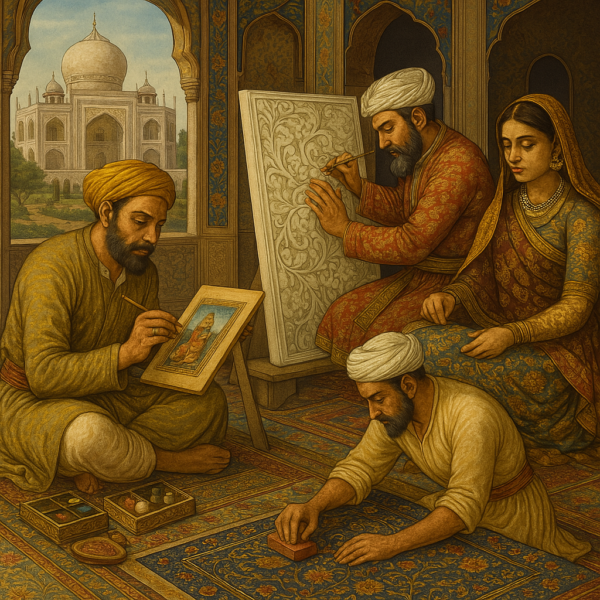
🇮🇳 Colonial Era and the Freedom Struggle: Resilience in Adversity
The British colonial period posed challenges for traditional crafts. Mass-produced British goods flooded the Indian markets, displacing local artisans and leading to the decline of many indigenous industries.
However, this era also sparked a craft revival movement, spearheaded by leaders like Mahatma Gandhi, who promoted the Khadi Movement. Hand-spun, handwoven fabric became a symbol of resistance and self-reliance—reigniting pride in traditional Indian craftsmanship.
🧶 Post-Independence to Present Day: A New Wave of Revival
After 1947, independent India made efforts to revive its rich handicraft legacy. Institutions like the Handicrafts Board and Cottage Industries Emporium were established to promote rural artisans.
Today, Indian handicrafts are a vital part of the Make in India campaign and have found new life through e-commerce platforms, international exhibitions, and sustainable fashion movements.
Crafts like:
- Pattachitra from Odisha
- Blue pottery from Jaipur
- Bamboo art from the Northeast
- Bidriware from Karnataka
- Channapatna wooden toys
- And Many More
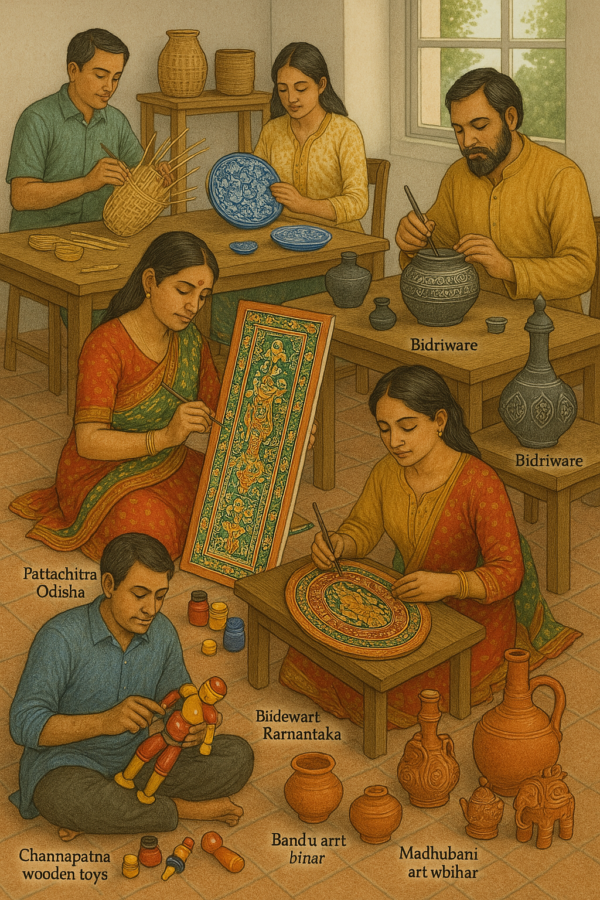
🌍 The Global Appeal of Indian Handicrafts
In a world leaning toward conscious living, handmade, sustainable, and story-rich products are gaining massive appeal. Indian handicrafts represent all three. Whether it’s a handwoven sari, a terracotta lamp, or a carved wooden tray—each piece tells a story of tradition, passion, and patience.
🛒 Why Support Indian Handicrafts Today?
When you buy a handcrafted product, you’re not just purchasing an item—you’re:
- Supporting local artisans and their families
- Preserving centuries-old techniques
- Encouraging eco-friendly and sustainable living
- Investing in something unique and full of character
At Indian Heritage Crafts, our mission is to bring these timeless creations to your doorstep while empowering the hands that make them.
✨ In Conclusion
The story of Indian handicrafts is the story of India itself—rich, diverse, resilient, and beautifully complex. As we move forward in the digital age, let us not forget the roots that ground us and the traditions that define us.
Explore our curated collection at IndianHeritageCraft.com and join this ongoing journey through time.
